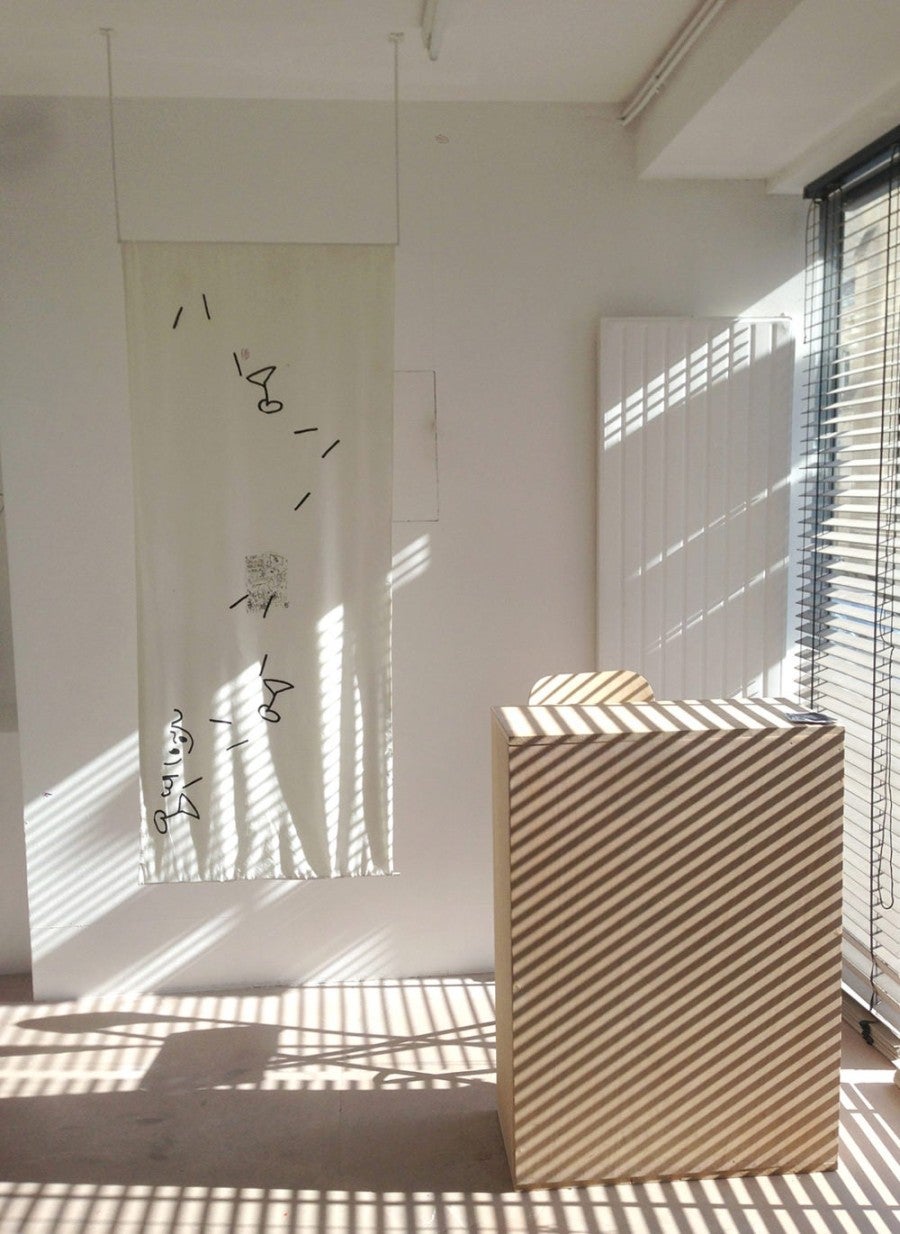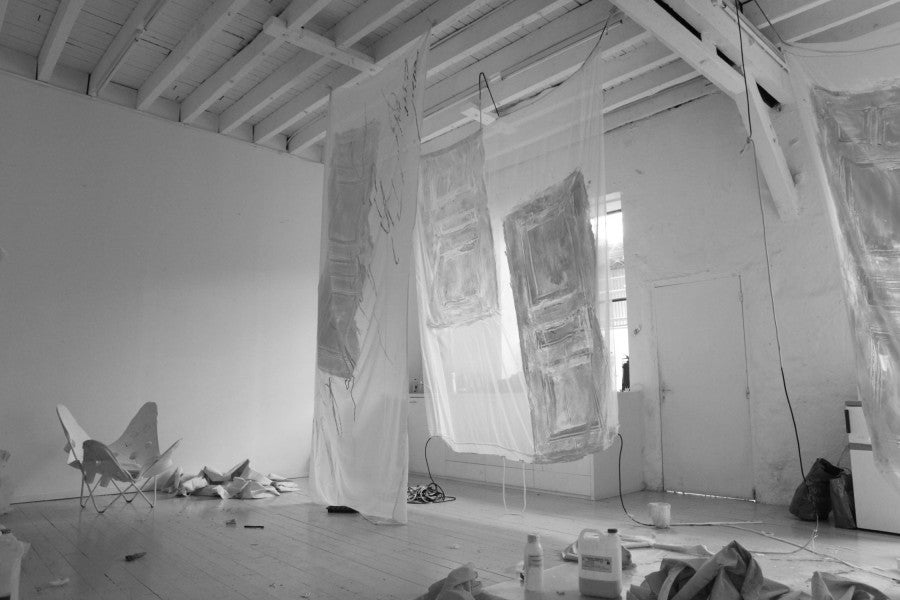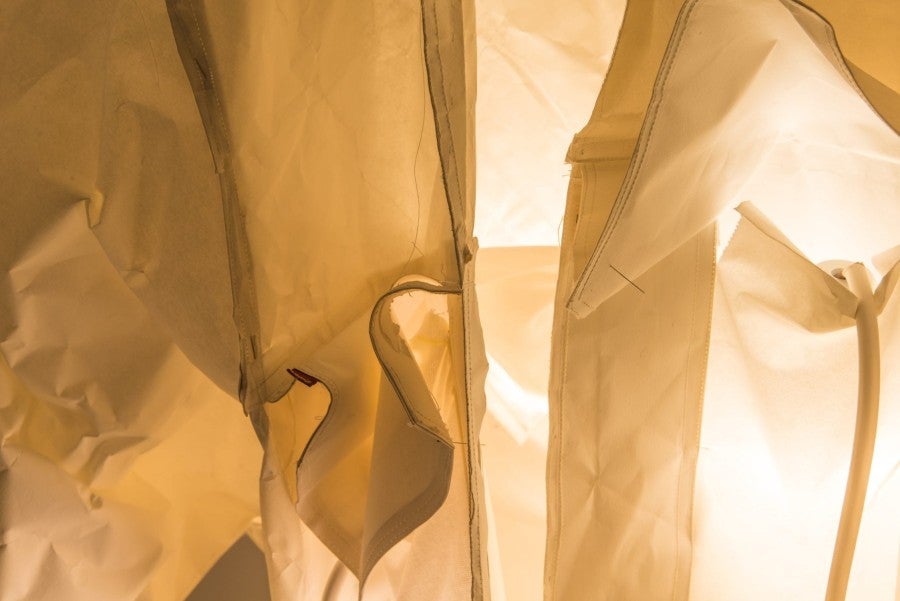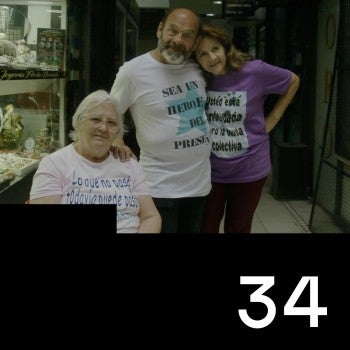A worn t-shirt and expressions of the inexpressible
![Mélanie Matranga, Reset again and again, 2015. Couch, moulds, green tea, coffee. Exhibition view, 反复 [FANFU], Palais de Tokyo. Photo: Aurélien Mole.](/sites/default/files/styles/wide/public/textwork/pdt-2015-meauelanie-matranga-120-e1573214746612_0.jpg?itok=y3B0pOf0)
1.
“I decided to use words and stories as clothes, as basic t-shirts. All my characters wear this story. It was important to me that all my characters communicate even if they are aware that their dialogue is an artifact.” — Mélanie Matranga, Interview at SCHIRN Kunsthalle Frankfurt, July 18, 20171
I am wearing these words. I wish they were bespoke, well-cut, stylish. I wish I wore them with carefree ease, the grace that comes with joyful confidence, sprightly health, and an unburdened conscious. But these words are second-hand, I found most of them in the scrap heap, stole others from my betters, and none of them are rightly mine. They are worn and stained, clunky and awkward, a poor fit for what I really mean to say. Woven into stories, I pretend they are a person. They fail as soon as I slip them on.
They are not even made of wool or cotton, silk or organdy, fur pelts or polyester weaves. They are made of paper. Cut into stacks of unblemished perfection and uniform size, the perfection of paper is fragile and temporary. Paper is made to be marked, readily stained, blacked out with a spill. As soon as I wear them, they tear. They smudge with every turn. And they are so fragile. Something a baby could crumple, an errant ember would turn it to ash, weep on these words and they’ll run, the cool kiss of rain dissolves them all into nothing. And still I wear them. Purchased through the economies we humans construct, of commerce and meaning, I wear to show who I am, but also to protect me.
![Exhibition view of Mélanie Matranga, 反复 [FANFU], Palais de Tokyo (21.10 2015 – 10.01 2016). Photo: Aurélien Mole.](/sites/default/files/styles/half/public/galleries/pdt-2015-meulanie-matranga-109-e1554292736734.jpg?itok=1JiLH-Kr)
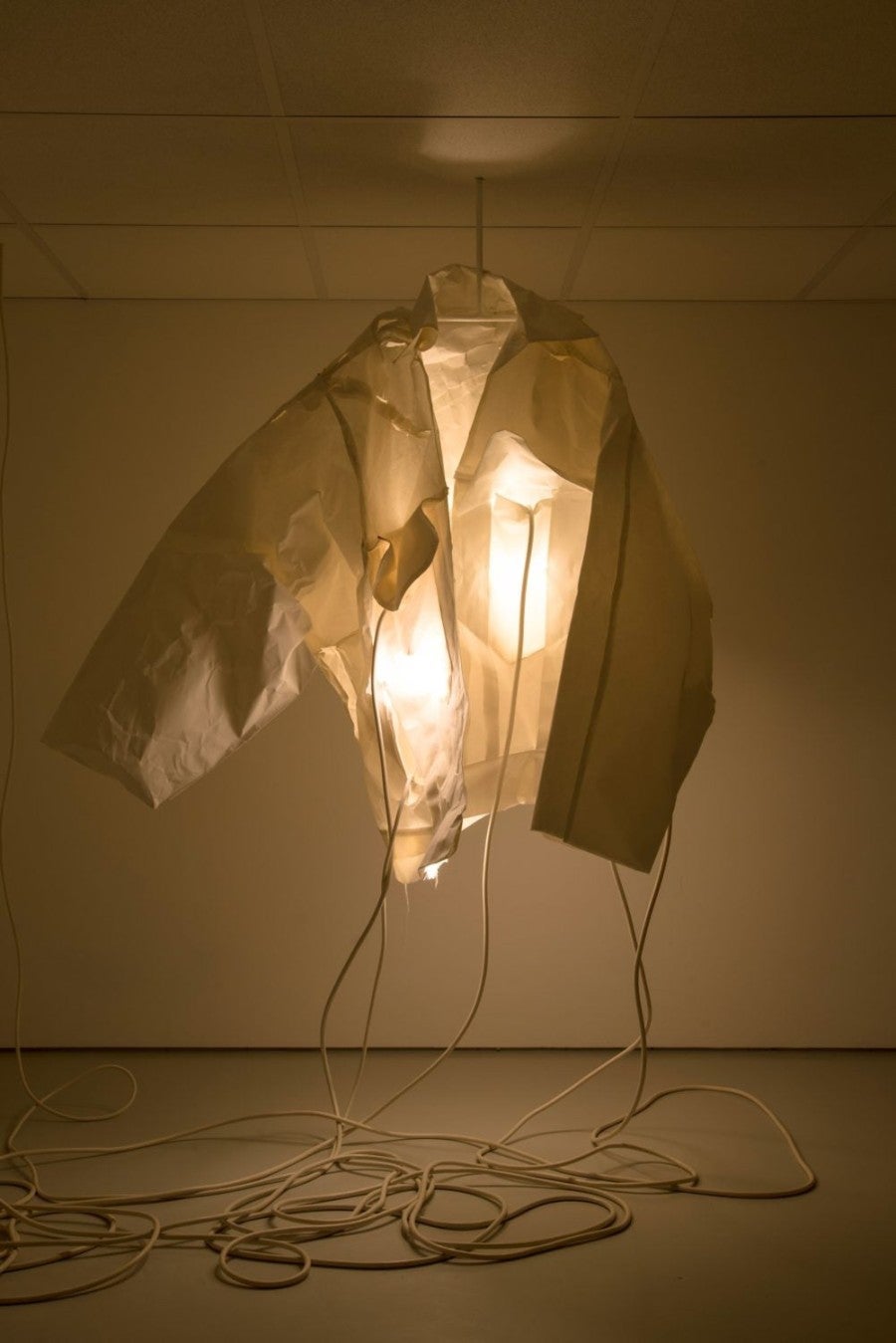
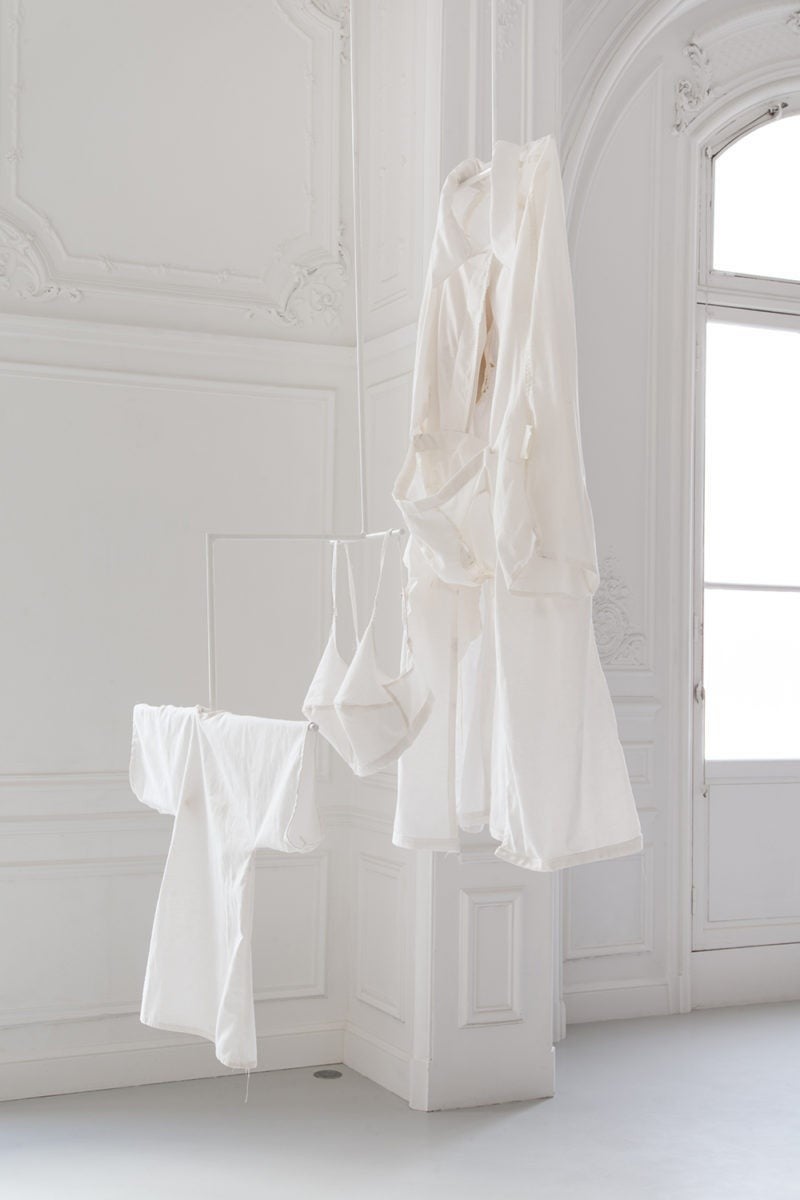
I’m too much of a coward to go without words.
With only these papery words, I step out. Light passes through them. The breeze too. During the day, they are a disguise, a costume to convince others I am more than just meat, that I belong amongst them, that I’m safe and kind or strong and powerful or alluring and sexy or capable and professional. All of it could disintegrate with a well-placed whisper, an errant move, a sneeze. At night, I gather my stories closer, wrap them around me like a blanket, a prayer, and still shiver. I might even wear more with silence, but I’m too much of a coward to go without words. John Cage once pronounced “I have nothing to say and I am saying it and that is poetry as I need it.2” But however little I have to say, I have an urgency to say it. I am not so brave to face the silence naked, at least not yet. Through them I try to connect to others and yet I know that they are what separates us.
So wrapped up in appearing, I so often fail to read others.
Even in the intimacy of intimacies, I still wear these words. However tattered and stained, worn with time and ragged with mishandling, they are the only currency I think I possess and so I spend them again and again. And again and again, they fail. Though their failure will always keep me apart from those I most love, there is a thinness to them. We can press body-to-body. However separate, we can only get so close. Through these thin sheaths of language we can feel the warmth of the other, and even after, tangled in each other’s limbs, as intimate as two bodies can be. Though no matter how many times I say –we-, I know I face my dreams alone. At least sometimes, we can have our solitary dreams together.
The ineffable is quite literally that which is inexpressible, a feeling I cannot put into words.
“What we cannot speak about we must pass over in silence” — Ludwig Wittgenstein, Tractatus Logico-Philosophicus (1921)3
And it’s good that these words are so thin maybe. That they fail. Even though they are the only magic I possess, I love when my light shines through these layers of language, despite myself. As awkward as I am, my words and stories, they are the shape that I am in, and I am grateful when others see through them.
Like clothes, words and stories reveal the shape of our bodies, not only that which can be touched and seen but also that which cannot. An auratic presence that billows into moments, fills rooms, and lives, making as best it can a life and one that can touch others. Beyond the basics, our stories are attempts to express who we are to others, what part we play in the drama we make with each other everyday. They permit us to be coy in public, showing ourselves and not showing ourselves simultaneously.
Fresh paper is only a fragile promise of what can be.
2.
I’m making these words now to try to make you see and feel how I feel. To show you what I have seen and how I saw it. For you to see me and for us to connect somehow, less lonely through this essay, from where I write to where you read.
“I use emotional structures more than formal structures […] I take very convoluted routes like these structures to express something without ever truly being able to.” — Mélanie Matranga for her exhibition at the Palais de Tokyo, 20154
I say all this to try to talk about the elusive, emotional architecture that the artist Mélanie Matranga creates. Empty shirts made of paper become lanterns for balls of light like souls, hanging above furniture and though shaped to hold our bodies, they are incapable of this because they are so gnarled and fragile. Oversized t-shirts pinned to a wall, in stained fabrics and carpets show the shapes of ghostly passages. The cinematic dramas of lovers coming together and often failing to communicate (capitalism sometimes an unwelcome third in a ménage à trois). There are things to be sure, and they’re textures from fabrics to drop ceilings, but they are less even things than moments. The tension of time between intimacy and alienation, our private selves and our public projections.
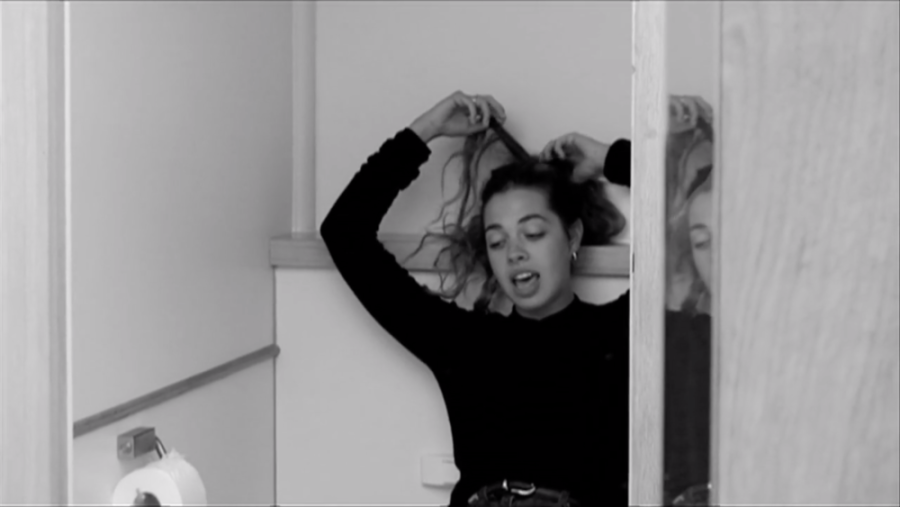
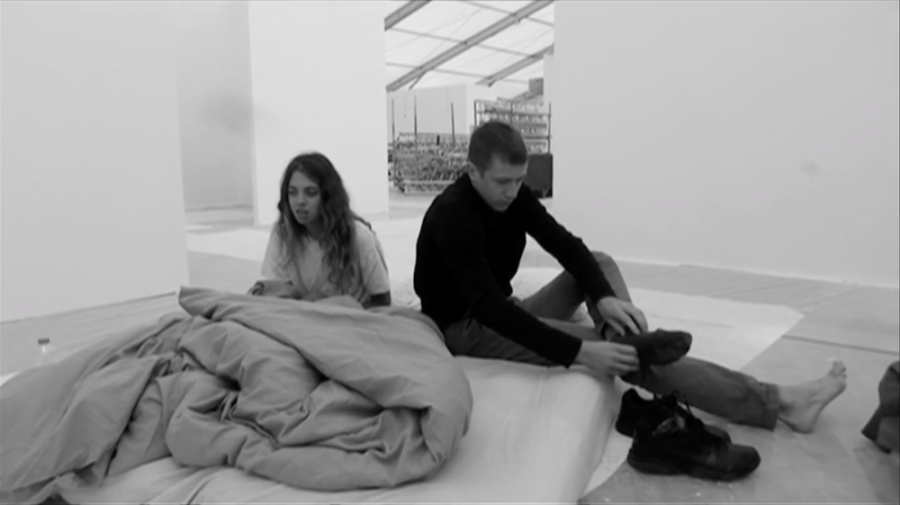

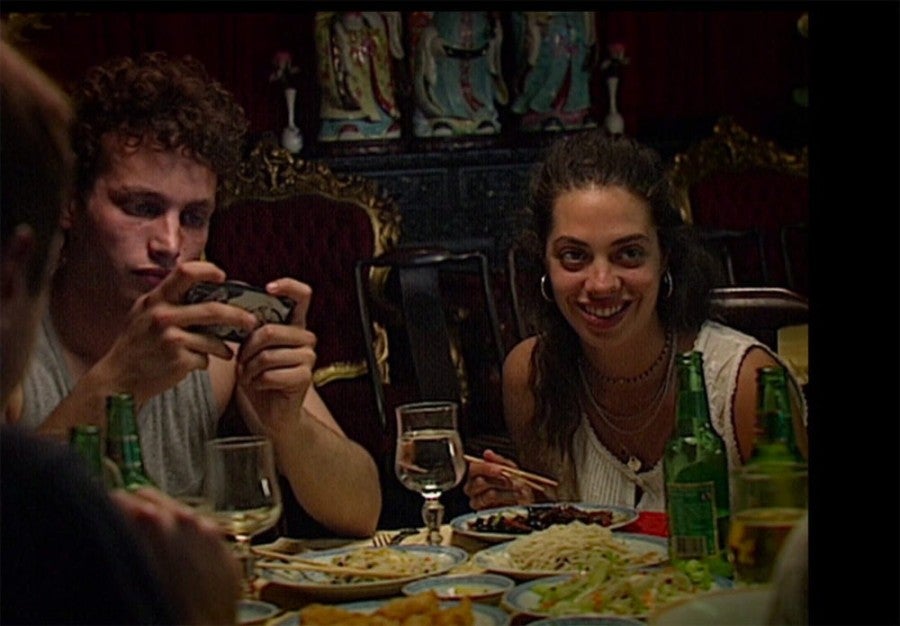
Despite their intimacy, she can’t trust him either.
In the first video of Mélanie’s series created for London’s Frieze Art Fair in 2014, From A to B Through E, a couple lie in bed in the middle of the fair being constructed, half-clad cubicles under the canopy of white tents, meandering workers in yellow vests shuffling in the background. A young woman tries to express her feelings about economies as her male lover dresses himself distractedly, as if he were alone, getting ready for work. She says in French:
I was reading in the newspaper yesterday an article about economy and what’s going on in the world and how the economy is seriously fucked up and it seriously reminded me of relationships, you know? Like, you think everything is fine and you trust the politicians and you trust the people who know the economy works and then one day, just like that, it’s over and you realize you can’t trust anyone.5
But… he’s not listening. Despite their intimacy, she can’t trust him either. Some attempt at communication about the similarities between economies and love in a bed, an unlikely intimacy in the space of commerce. Whatever connection they made with their bodies fails. “From A to B” is just from one to another, as Andy Warhol made so clear in his iconic book The Philosophy of Andy Warhol: From A to B and Back Again, but with Mélanie’s added “through E” it feels like it must pass through the economies that enmesh us all, the systems of meaning and exchange that govern and color all our relationships whether we like it or not. The video shifts in the next scene to the man of the last encounter quietly smoking in another section of the fairground under construction, a British worker approaches him and asks for a cigarette. Our distracted lover begs off, mumbles a series of insincere excuses in English. His lack of generosity from one scene to the next feels pointed.
In her erotic film You (2016), coupling and its disagreements make the “we” of love impossible, melting again into the desire and separation of “you”. So often in Mélanie’s work, the nature of human relationships becomes embedded in our costumes and environments, the difficulty of connecting in the times and places we exist. In the opening scene, a scantily clad man and a women quarrel surrounded by the crisp white sheets and crisp white walls behind them. She wears a fading Metallica t-shirt (band t-shirt for certain demographics being some expression of self) and he only tartan boxer shorts. Though clearly intimate, their togetherness is hardly adoring. The following scene, another man tells a different woman of a neighbor, an older woman of style, whom as a boy he would have fantasies about. In the following vignette, the couples mix and the woman from the first scene fucks the man from the second atop a toilet. The mixing continues as the woman who heard the story of the desired neighbor, drunkenly relays it as her own to others, including the man from the first scene. (A distant song plays, you can taste the smoke, almost wet surrounding them, the boy’s ignored but our female listener caresses warmly, whispering compliments, with sensual affection.) And in the final tableau, three of them end up in bed or at a party. If it sounds a little convoluted, it’s only because love and bodies, friendships and humans are messy.
These characters in all their intimacy always maintain a distance, an alienation from each other, a difficulty to connect. Even the sex feels hungry and mechanical rather than bonding. And though we might always have these feelings of intimacy and disunion, most of Mélanie’s characters/actors are young, and nowhere do we feel this deep yearning to connect and the utter loneliness of its failure more pointedly than in our youth. It’s then that we wear both on our sleeves. Deep yearning and total alienation twisted together and doused in hormones. So evidently in her films and more atmospherically in her installations, Mélanie creates structures where these two polarities co-exist. As the text accompanying Mélanie’s exhibition at the Palais de Tokyo describes so aptly, her installations are “places for people to be lonely together.”6
3.
The title of her exhibition at Paris’ High Art in the Spring of 2018, Sorry, sounds a tender admittance of failure (of exchange, of love, or everything) and an embarrassed petition for atonement put so simply. Sorry. Many of her titles like this one imply a failure or a mistake between two people. In this, two pieces from her Palais de Tokyo exhibition, 反复 ([fanfu]) come to mind: I prefer we stay friends, 2015 and Finally we cannot stay friends, 2015. Both of these works are ghostly laments soaked in white silicon tangled with net curtains. The first is an unuseable metal chair draped with fabric and adorned with fake, broken flowers like an altar. The second, a soft cocoon, is draped closed with a tarp. All with a twist of poetry announce vulnerability and distance.
But these failures to connect alluded to throughout her work are soft ones, and for her show at High Art this single-word attempt at forgiveness, in its brevity, somehow feels both facile and sincere. This Sorry reflects a mood found throughout the exhibition. The pristine interior of the gallery first rooms looked almost spectral in its ornate white moldings, a huge calendar of moon phases divided the main space stretching from floor to ceiling, black fabric flags each with a white lunar sphere phasing into the darkness of the darkness of a new moon. Nearby white fabric clothes: a dress, a bra, a shirt, hung from the ceiling with white ropes and a white metal armature, one of three pieces in the exhibition titled My Shape (2018). On the other side of the room, six shirts hung in an inverted pyramid, arms outstretched, the bottom deep yellow, the tops white, titled Sunset (2018). A door leads to what looks like a bathroom, but peer closely and the toilet isn’t hooked to any pipes, only a prop, accompanied by a stack of Cahiers du Cinema and a speaker, relaying stories told from a series of young French voices from everyday life. Figurative drawings by another artist, t5 (work by others regularly appear in Mélanie’s installations), and beyond into a darkroom with a drop ceiling. More phases of the moon, here white circles on black and other hanging clothes, one made of Thebes fabric (often employed for upholstery) and the other of paper, lights tucked inside of them both with a tangle of electrical cords, both are again titled My Shape (2018). The upholstery fabric cut into clothing knots many threads of meaning between the two: the supple skin that covers hard architecture, the clothing of furniture, both made to shape our bodies, the thingness of bodies too easily objectified, both ways that we express who we are to ourselves and others.
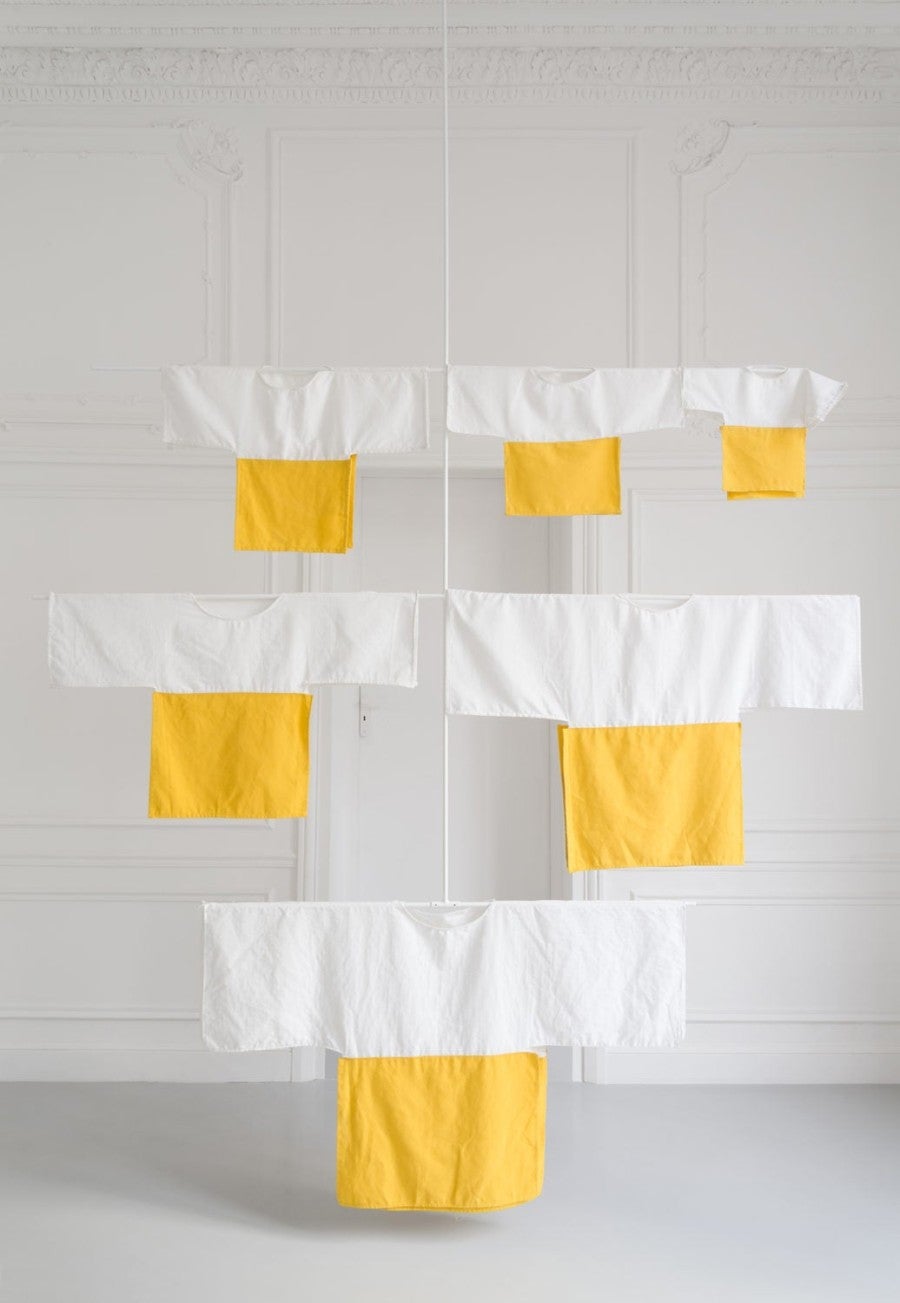
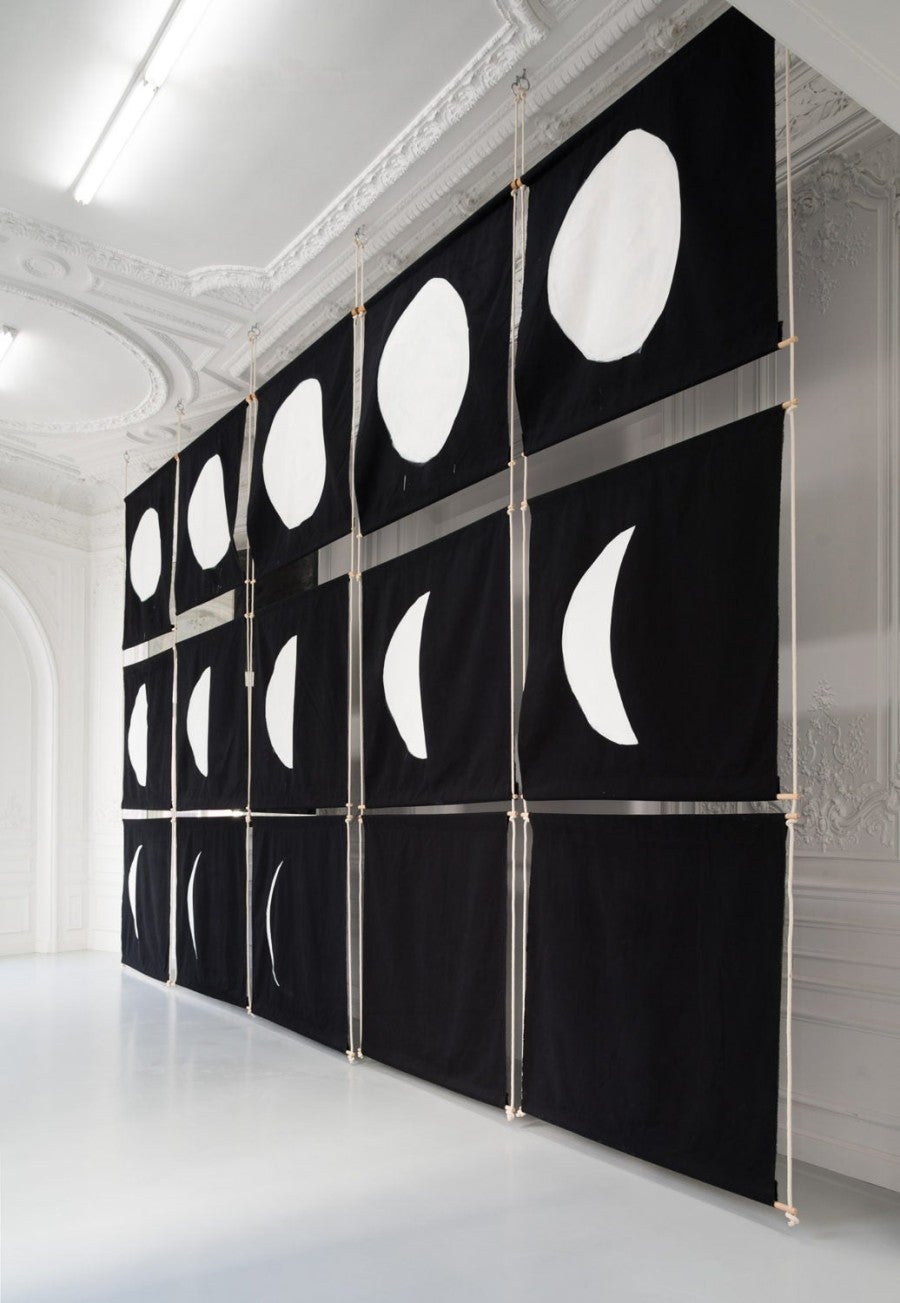
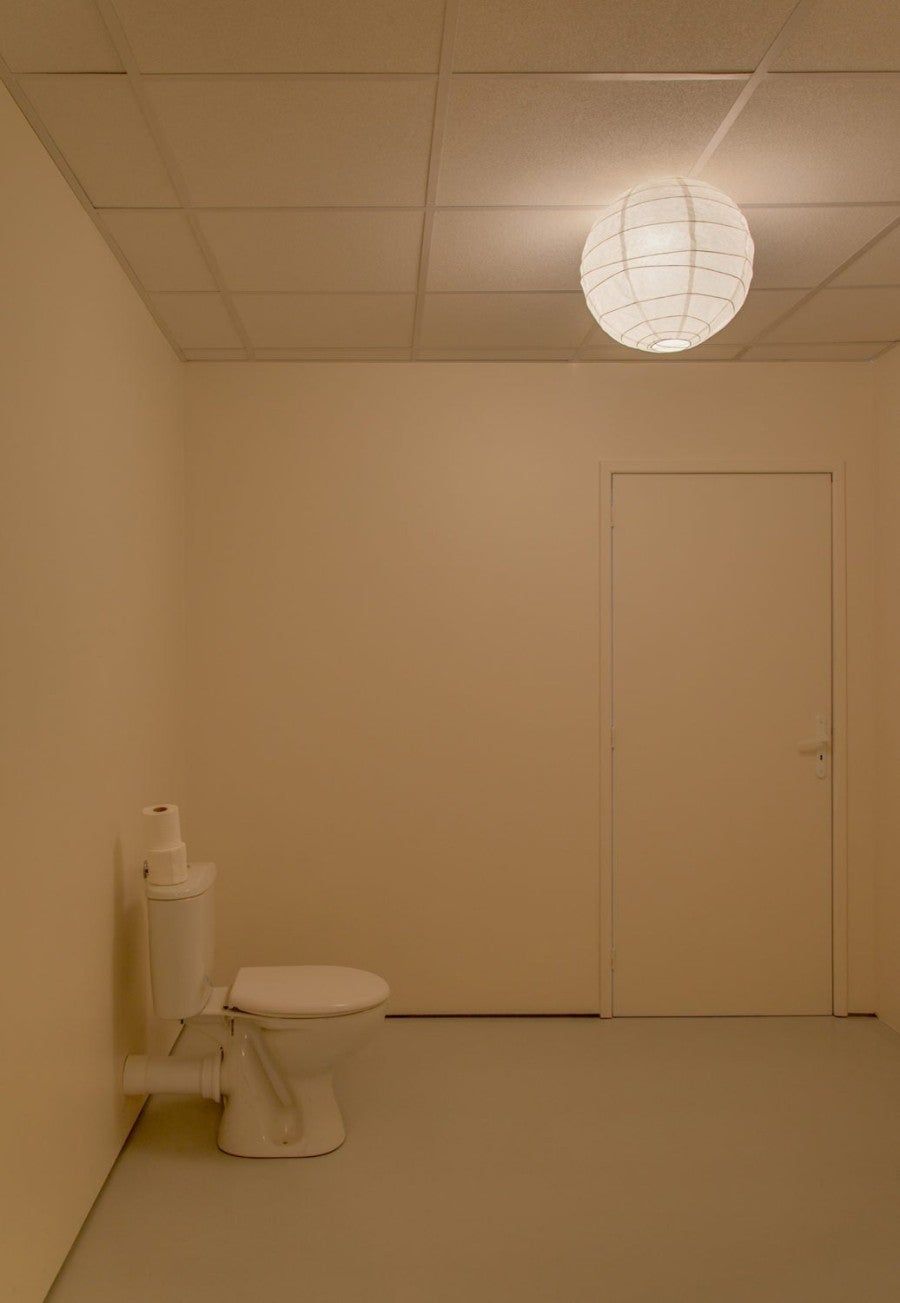
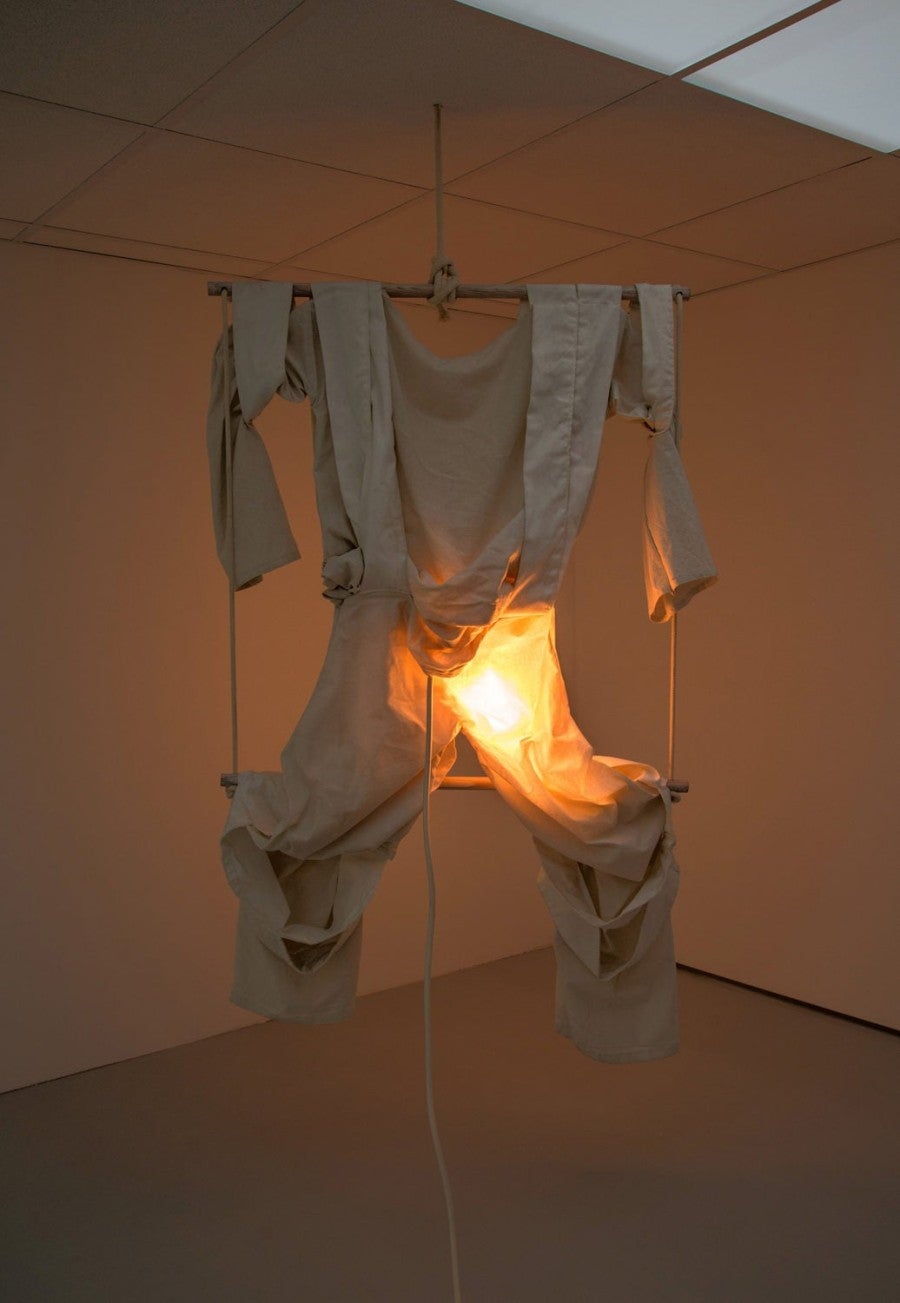
These are the facts of the show, finely drawn. But the feeling is something else, something more elusive. The feeling is soft. The softness of clothes and the missing bodies to fill them, the softness of time told by moon phases and not clocks, the softness of shadows, the soft but unbridgeable distance between us. And of a closing intimacy, as you pass from the grand first rooms of the gallery through the curious prop bathroom to the dark confines of a drop-ceiling room. Changing the shape of the room shifts your relationship to your body in space, as well those things you encounter in that room. Something physical and lonesome, but not necessarily functional. These clothes are not meant to be worn, the toilet’s not to be used (despite the magazines and the stack of toilet paper rolls on its tank). The movement between is strange, having to pass through a bathroom, even a prop one, gives you a weird feeling, the sparse white neutrality of the grand molding of the art galleries matched against the sparse, neutrality of bathrooms, both glaringly white.
After seeing the show, I re-entered the street life of Paris, to sit and talk and smoke with the artist and we talked of life and labor and the intersections of the two. There is no literal story I can feed out about the exhibition, this represents that, and maybe art shouldn’t offer such easy reads. But I have these things, a wealth of references, and most of all a feeling, and when I look at all of Mélanie’s work, whether it’s films where couples argue in bed or mysterious empty clothes, paper lanterns leading to paper clothes, upholstery fabric shaped into outfits leading to shapely furniture, I have this feeling and here I am, like any writer does, trying to put this feeling into words, place it against my own body and its struggles and joys. I feel better outside literal descriptions, even as I attempt such solid facts throughout. This is not just a meditative aura, it is truly grounded in things and sounds and images.
4.
none of them alone contains the feeling of her work...
Art is always an attempt by an artist to communicate: a sense of aesthetics or emotional value, political force or conceptual rigor. When writers like me write about it, our words are meant both as a way for you to vicariously see the art that we report on but also all the things that cannot be seen. The sounds of the street that we walked through to get there, the sense of anticipation as we enter through the doors of the gallery, the millions of other things we’ve seen and heard and experienced that can reveal with sensitivity the nuances of what it meant to be human in a time and place. Along with the history of all the things in art that came before it and the context of the time in which the artist we’re seeing created her exhibition, there are of course facts. That Mélanie was born in France in 1985, that she’s had shows at Karma International in Los Angeles in 2016 and Palais de Tokyo in Paris in 2015, but these facts are merely hooks that we hang our observations, feelings, and thoughts upon. I can tell you the names of shows, given in languages foreign to their exhibition ( 反复 [fanfu] for the Palais), or not in words at all but merely symbols ( • – • for a recent show at Villa Vassilieff). Along with the titles of her pieces like “lonely pleasure” (2016) or “emotional not sentimental” (2015), and something of the artist’s aesthetics.
And through these facts, some sense of meaning begins to emerge, but none of them alone contains the feeling of her work. The sense of poetic meditation and emotional urgency, the feeling that something sexy is happening but less about titillation and more about the thrill of intimacy, that bodies belong here, along with their inability to truly connect. A feeling of the quotidian and familiar and elliptical strangeness. That pieces of furniture, beds layered with silicon, somehow remind you of humble things you might have owned, and lacking all the saccharine of nostalgia, they tap into some loose sense of memory and the slow passage of time.
Looking at the unworn clothes hanging in Mélanie’s exhibition at High Art, I thought of my own worn clothes, what I attempt to say with them. I think of these papery words as clothes, their fallibility and familiarity, and how I am wearing them to try and communicate to you something elusive about this singular artist. We want to shine but we also want to hide and Mélanie catches this tense duality. The warmth of our attempts and the solitude of their failures. With palpable force and ethereal grace, Mélanie captures the struggle of what can and cannot be said and the bodies from which we say them, how both these things construct an identity, an existence, a story. And how these stories, our stories can always still fill a worn t-shirt.




![Exhibition view of Mélanie Matranga, 反复 [FANFU], Palais de Tokyo (21.10 2015 – 10.01 2016). Photo: Aurélien Mole.](/sites/default/files/styles/half/public/galleries/pdt-2015-meauelanie-matranga-120-e1573214746612.jpg?itok=mIBwwRsN)
![Mélanie Matranga, Reset again and again, 2015. Couch, moulds, green tea, coffee. Exhibition view, 反复 [FANFU], Palais de Tokyo. Photo: Aurélien Mole.](/sites/default/files/styles/half/public/galleries/pdt-2015-meauelanie-matranga-116-e1554293490740.jpg?itok=b7KrtmI5)
![Mélanie Matranga, Fortune Light, 2015. Lamp made of Japanese paper, speakers, cables. Exhibition view, 反复 [FANFU], Palais de Tokyo. Photo: Aurélien Mole.](/sites/default/files/styles/half/public/galleries/pdt-2015-meauelanie-matranga-089_0-e1554293970974.jpg?itok=e4euN78E)
